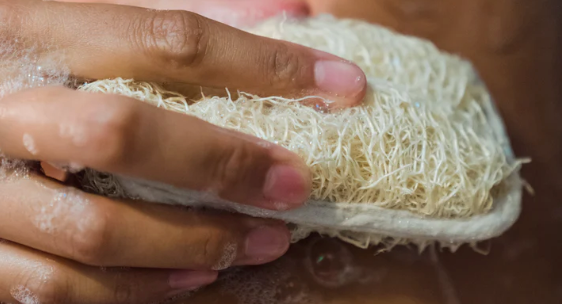Onda Beauty Blog

How to Exfoliate Your Body the Right Way
An expert’s guide to achieving summer-ready skin in a flash

As the mercury rises, it's time to shed those layers and show some skin. But first, exfoliation. “Exfoliation is fundamental to skin health,” says Heather Bradley, a licensed aesthetician based in Los Angeles. “Exfoliation essentially expedites the skin cell turnover process, encouraging the production of healthy, new skin cells, while the physical action of exfoliating also stimulates blood circulation, bringing nutrients to the skin and helping to stimulate the production of collagen.” And that’s not all: a regular exfoliation routine also allows your skin to absorb products better, prevents bacne and pesky ingrown hairs, while revealing brighter, fresher skin from head to toe.
Here, our complete guide to the best body exfoliators and achieving soft, summer-ready skin in no time.
What are the Benefits of Body Exfoliation?
Prevents breakouts and acne
By sloughing away dead and dry skin, along with dirt and debris, exfoliation keeps your pores unclogged and, in turn, helps prevent breakouts, while also preventing ingrown hairs.
Promotes cell turnover
Exfoliation removes dead skin cells and encourages the generation of new cells. Healthy cell turnover not only helps to reveal newer, brighter, and more even-toned skin but also makes the skin feel smoother and softer.
Stimulates collagen production
Regular exfoliation promotes Collagen synthesis. Collagen gives our skin strength and resilience, keeping it plump and smooth in appearance. By removing the surface layer of dead cells, the skin is triggered into producing new cells, which helps to stimulate new collagen production.
Evens skin tone and reduces hyperpigmentation
Exfoliation helps to reduce dark spots, hyperpigmentation, and melasma by breaking up these pigmented cells and sloughing them off to reveal a brighter and more even skin tone.
Boosts circulation and the lymphatic system
Physical and manual exfoliation promotes blood flow to the skin, which delivers fresh oxygen and nutrients to the cells, making the skin look brighter and more radiant. Exfoliation also encourages lymphatic drainage, moving waste products and toxins out of the body for clearer, healthier skin.
Helps other skincare products work more effectively
“The buildup of dead skin cells on the surface essentially prevents the delivery of moisturizing ingredients in your products,” says Bradley. By removing dead skin cells, exfoliation allows moisturizers and the active ingredients in your skincare to be better absorbed, work more quickly, and be more effective.
What is the Best Way to Exfoliate Your Body?
When it comes to body exfoliation, there are several options: physical, manual, and chemical. Products are usually broken up into scrubs that use physical exfoliants in the form of granules or beads; washes that use chemical exfoliants such as enzymes or acids; and leave-on body lotions and serums. Manual exfoliation involves using a textured cloth, sponge, or dry brush to slough the skin.
Chemical exfoliants
Chemical exfoliants use ingredients such as fruit enzymes and acids like Citric, Alpha-Hydroxy (AHAs) and Beta-Hydroxy Acids (BHAs) to loosen and break down the bonds that hold dead skin cells together so they can be sloughed off.
AHAs, such as Lactic and Glycolic Acid, can cause a mild tingling sensation due to their low pH, so do not apply them to freshly shaved skin. BHAs, such as Salicylic Acid, are also antibacterial so are ideal for those who are prone to breakouts and acne. While applying these ingredients topically onto the skin will loosen dead skin cells, Bradley says you still need to slough off these particles manually or physically.
Physical exfoliants
Physical exfoliants are washes or scrubs formulated with powders, fine crystals, or biodegradable beads that scrub the dead skin cells off the surface of the skin through an abrasive action. Bradley recommends avoiding products with large grains made from pits, seeds, or kernels, as these can have jagged surfaces that cause micro-tears in the skin. “If you are looking for something effective yet gentle, sugar is also a great natural source of Glycolic Acid,” she says. Scrubs should always be used on clean, damp skin and in soft, gentle strokes, paying particular attention to areas like the knees or elbows, along with spots where ingrown hairs can occur, such as the legs or bikini line, as well as the upper arms, which are common spots for keratosis pilaris (those dry, rough patches and tiny bumps).
Manual exfoliants
While there are plenty of exfoliating products available, Bradley says, “Simply rubbing damp skin in a gentle, circular motion after cleansing using your hands or a clean, cotton washcloth will exfoliate effectively.” Another option is dry brushing using a brush with natural bristles to slough off dead skin, improve blood circulation, promote lymphatic drainage, and stimulate the production of collagen and elastin. Always start at your feet and dry brush upward toward the heart using firm, small strokes. For the stomach, dry brush in a clockwise direction.
